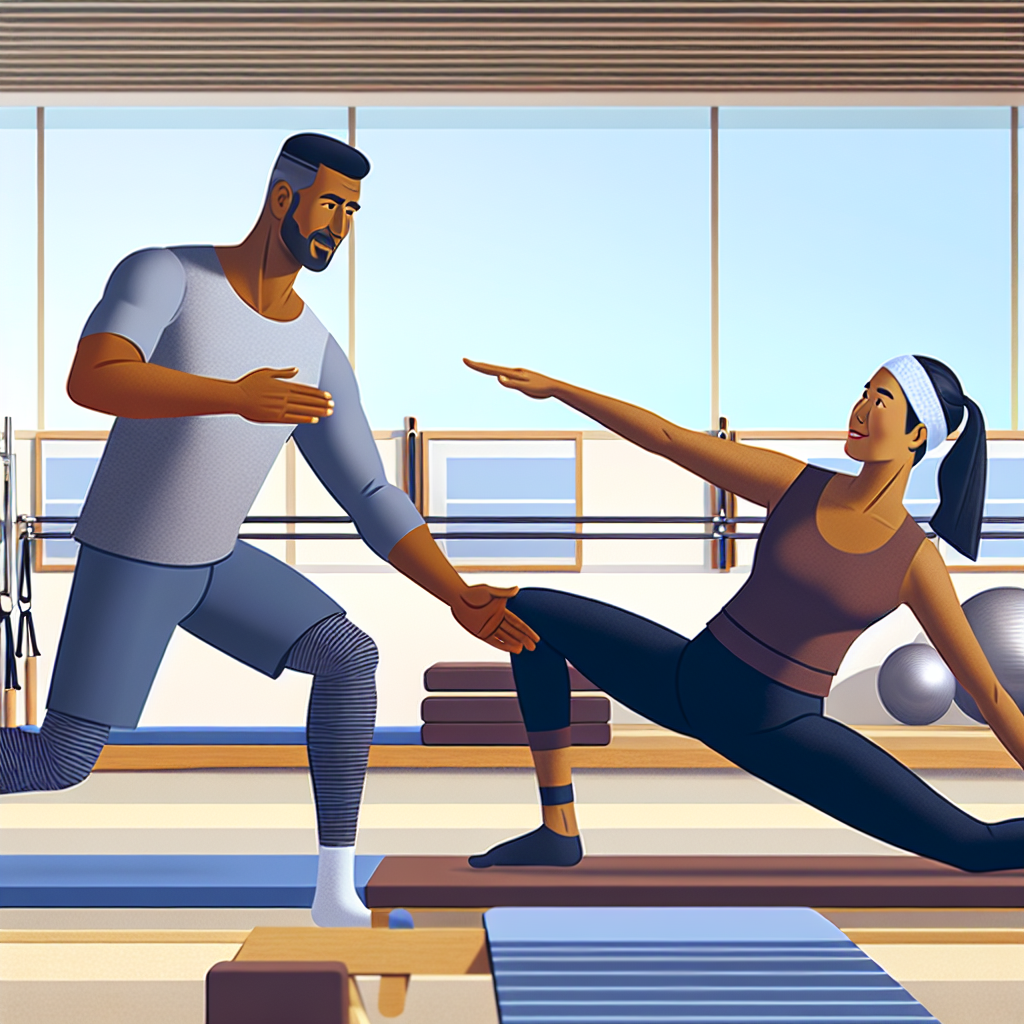Pilates for Male Athletes – Mobility and Injury Prevention
Introduction
For decades, Pilates was often associated with dancers, women, or rehabilitation programs. However, this powerful, low-impact form of exercise has increasingly gained traction among male athletes—from high school sports players to elite professionals and weekend warriors. As fitness science continues to evolve, men across the USA are recognizing the profound advantages Pilates offers: enhancing mobility, reducing injury risk, and improving athletic performance.
Pilates is a system of controlled movements rooted in core stabilization, flexibility, muscle balance, and mindful breathing. Created by Joseph Pilates during World War I to rehabilitate injured soldiers, it’s now a common tool used by physical therapists, strength coaches, and sports medicine specialists to provide foundational movement strength for athletes across all disciplines.
Unlike traditional strength training, which emphasizes increasing power or physique through heavy weights and repetition, Pilates works the deeper intrinsic muscles responsible for alignment and joint stability. These underlying support systems are critical for maintaining healthy mobility—the range and quality of motion across joints. When athletes possess both strength and mobility, their bodies become resilient to common injuries caused by overuse, misalignment, or muscular imbalances.
Growing evidence, both scientific and anecdotal, supports Pilates for men of all ages. For instance, teenage athletes use it to build coordination and balance as their bodies develop; men in their 20s to 40s apply Pilates as a cross-training strategy to avoid injury and enhance performance; and older men rely on it for posture correction, joint care, and fall prevention.
This evolving perspective is reflected in major athletic programs and professional sports leagues. From injury prevention to functional movement longevity, it is evident: Pilates is no longer a niche workout—it’s a vital part of any athlete’s regimen.
Features: Mobility, Injury Prevention & Professional Endorsements
Recent evidence from peer-reviewed studies and athletic organizations underscores Pilates’ role in building a strong, mobile, injury-resistant body.
One of its greatest strengths lies in core activation—not just visible abdominals, but deep stabilizers including the transverse abdominis, pelvic floor, and multifidus. A study in the Journal of Sport Rehabilitation found that athletes engaging in a 12-week Pilates program improved trunk strength and balance—attributes strongly linked to injury prevention and sports performance.
Pilates also promotes balanced muscular development. Many sports create dominant movement patterns—tight hip flexors, overactive quads, or underused glutes—all of which can contribute to injury. Coaches and physical therapists use Pilates to restore symmetry in muscle engagement, improving posture and joint alignment, especially in the hips, knees, and spine.
Flexibility is another area where Pilates stands out. In a study published in Clinical Biomechanics, male athletes practicing Pilates saw significant gains in hamstring and hip mobility. Increased flexibility of these muscle groups reduces risk for common injuries like hamstring strains and groin pulls—especially important in explosive sports movements like sprinting and cutting.
Beyond amateur settings, numerous professional organizations integrate Pilates into their regular training strategy. Several NFL and NBA teams employ certified Pilates instructors. Pro athletes such as LeBron James, Jake Arrieta, and Antonio Brown credit Pilates for enhancing their durability and prolonging their careers. Even the U.S. Army includes Pilates training to boost functional conditioning and reduce injuries among soldiers.
Older athletes or aging men reap lifelong benefits too. Because Pilates uses low-impact movements, it protects aging joints by strengthening secondary stabilizer muscles. For instance, strengthening the muscles around the knees, hips, and spine helps to reduce pain and delay degeneration from osteoarthritis or disc compression.
Also critical is proprioception—our sense of body position and coordination. For adolescent athletes, combining Pilates with their sport helps them build proper biomechanics early, mitigating long-term issues like postural imbalances or motor inefficiencies. This coordination helps both on and off the field, improving everything from sprint form to basic body mechanics.
Combine all these advantages—core strength, muscular balance, joint protection, flexibility, and neural coordination—and it’s no wonder more trainers and athletes fully endorse Pilates as a mainstay in athletic programs.
Conclusion
Pilates isn’t just an accessory to athletic-style fitness—it’s an essential tool for building a resilient, mobile body. Whether you’re a growing teen, an adult competitor, or a mature athlete intent on preserving your body, the structure of Pilates delivers long-term value.
It offers a smart complement to other training modalities, helping prevent injuries, enhance joint function, and sustain your active lifestyle into older decades. As sports medicine continues to stress mobility and injury prevention, Pilates emerges as one of the most efficient and intelligent movement systems available. Embracing it can revolutionize how the male athlete moves, performs, and thrives.
In the words of many pros who’ve made it their secret weapon: “Your body will thank you. On the field, in the gym—and well into your later years.”
References
1. Journal of Sport Rehabilitation – Effects of a 12-week Pilates Program on Trunk Strength and Balance
2. Clinical Biomechanics – Influence of Pilates on Hamstring Flexibility in Male Athletes
3. U.S. Department of Defense Health News – Pilates on Pause During COVID… but Coming Back Strong
4. American Council on Exercise (ACE) – Pilates for Men: Why More Males Should Add It to Their Routine
5. Verywell Fit – Benefits of Pilates for Men
Concise Summary
Pilates is revolutionizing how male athletes across all ages train for performance and longevity. Through low-impact, core-focused movements, it boosts mobility, improves flexibility, and enhances injury prevention. Scientific research and elite athlete endorsements highlight its effectiveness in strengthening stabilizer muscles, balancing the body, and optimizing athletic movement. Young athletes benefit from developing proper movement patterns, while older men value the joint protection and postural support Pilates offers. From high school fields to professional sports teams and even the U.S. military, the message is clear: Pilates is not optional—it’s an essential tool for every athletic body.

Dominic E. is a passionate filmmaker navigating the exciting intersection of art and science. By day, he delves into the complexities of the human body as a full-time medical writer, meticulously translating intricate medical concepts into accessible and engaging narratives. By night, he explores the boundless realm of cinematic storytelling, crafting narratives that evoke emotion and challenge perspectives. Film Student and Full-time Medical Writer for ContentVendor.com



